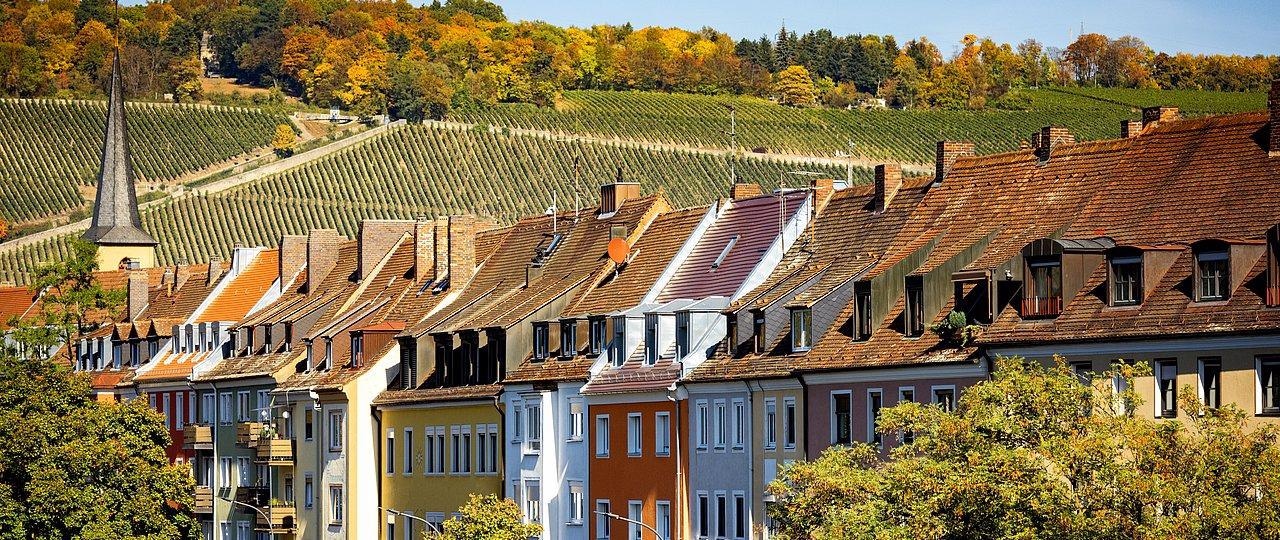Green infrastructure can help communities adapt to climate change by lowering heat stress caused by increasing air temperatures. However, the type of vegetation has a significant impact.
 As part of an empirical study in Würzburg, a research team led by TUM spent three years investigating the effects of urban greening on the city's climate. Image Credit: iStockphoto.com / Massimo Santi.
As part of an empirical study in Würzburg, a research team led by TUM spent three years investigating the effects of urban greening on the city's climate. Image Credit: iStockphoto.com / Massimo Santi.
A three-year empirical study in Würzburg was conducted by a research team led by Technical University of Munich to better understand the presence of urban heat islands and the link between daily and seasonal outdoor thermal stress.
Comparing Urban and Suburban Climate Conditions
During the summer, the mean air temperature in the city was 1.3 °C higher than in the suburbs, while during the winter, it was 5 °C higher.
The differences were influenced by the characteristics of the prevailing land uses and especially by the number of buildings.
Stephan Pauleit, Professor, Strategic Landscape Management, Technical University of Munich
Over the three-year research period, 97 hot days with air temperatures surpassing 30 °C were recorded at one of the urban areas, called Marktplatz, which had no trees. The wet bulb global temperature, which is a measure of thermal stress, surpassed the threshold of 35 °C on nine of the days, indicating high thermal stress.
The wet bulb globe temperature (WBGT) is the lowest temperature that can be obtained by evaporating water alone under present environmental circumstances. It was produced using meteorological data and other related factors at seven separate sites, ranging from the Marktplatz to the suburb of Gerbrunn.
These figures show the impact of the surrounding environment, which includes site-specific features like buildings and greenspaces.
Our study showed that extreme heat stress in summer could be halved with around 40% cover of greenspaces in the built environment, including grass lawns, green roofs and green walls with little compromise in increasing winter cold stress.
Dr. Mohammad A. Rahman, Scientist and Chair, Strategic Landscape Management, Technical University of Munich
A Variety of Greenspaces is Important for the Urban Climate
Trees provide a variety of biophysical services in urban environments. Trees reduce shortwave radiation intake to the ground level by up to 90% with their extended canopies, especially during the summer when deciduous trees are in leaf in moderate and chilly areas.
Moreover, trees chill the air around them by 1 to 8 °C while also increasing the relative humidity. This happens as a result of transpiration, or the evaporation of water through the leaves during the food-production process.
Simultaneously, trees can have negative consequences, such as preventing filthy air from being diluted and blown away by winds by obstructing vertical and horizontal air mixing within small roadway canyons.
In contrast to the constructed environment, grass cover minimizes the radiative heat load through increased reflection. It also allows for increased wind speeds in the summer to minimize summer heat load and more solar radiation in the winter to alleviate cold stress.
Indispensable: Strategically Planned Greenspaces
Dr Rahman added, “Our results call into question the inner-city densification trends currently seen in growing urban areas. To successfully adapt to climate change, adequate urban greening must be ensured.”
Greenspaces must be deliberately constructed to successfully alleviate heat stress in high-density urban areas to avoid detrimental consequences of climate change on human health.
Journal Reference:
Rahman. A, M, et al. (2022) Spatial and temporal changes of outdoor thermal stress: influence of urban land cover types. Scientific Reports doi:10.1038/s41598-021-04669-8.